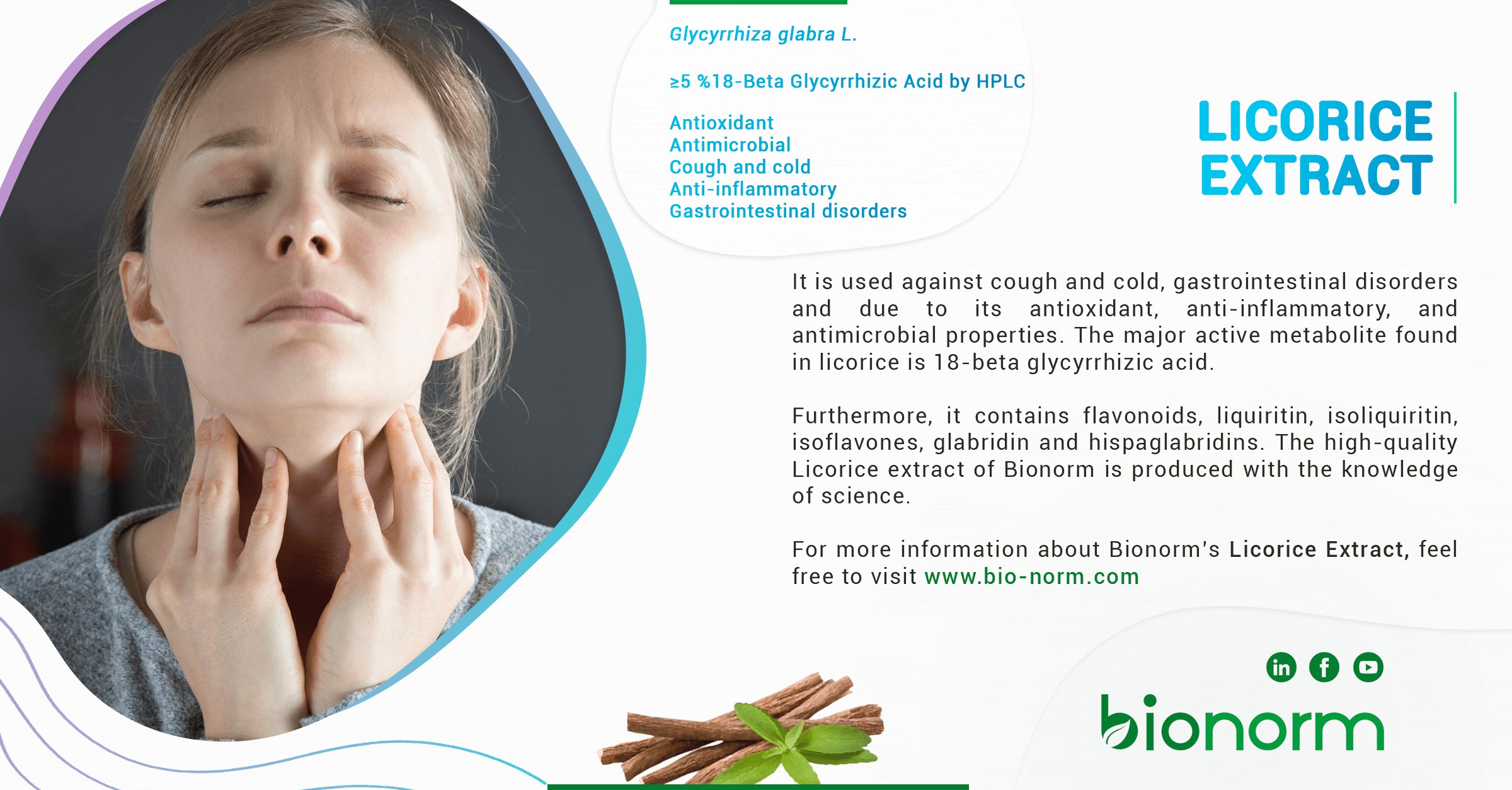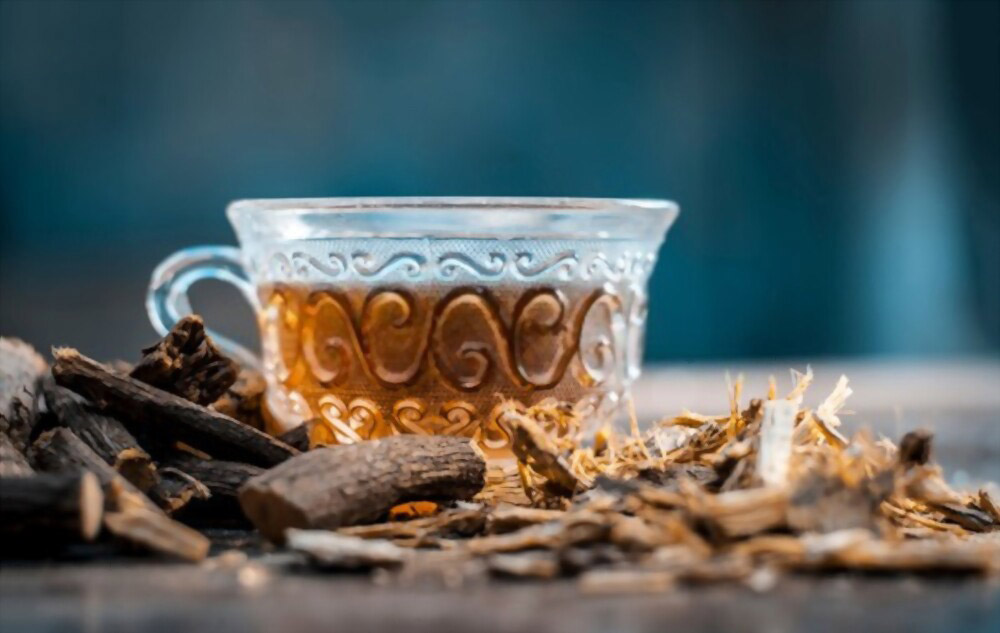
Licorice Extract
Glycyrrhiza glabra, a Latin name of licorice, is a perennial, herbaceous plant that has been used considered as one of the world’s oldest herbal remedies. It belongs to the Fabaceae family. The licorice extract is produced from this plant by the advanced knowledge of science and the combination of technology. The plant Glycyrrhiza glabra grows up to 0.30 to 1 meter in height and 0.30-0.60-meter width. Due to its small leaves and thin stems, licorice can be seen soft to be touched, but it is much tougher than it looks, whereas it can also tolerate drought well.
Medicinal Usage
The medicinal usage of licorice dates back to ancient Egypt. In those times, the root of Glycyrrhiza glabra was made into a sweet drink for pharaohs. Following that, the licorice extract has been used to cure cough and cold, whereas the first product that contains licorice as medicinal was the throat pastilles. Today, licorice is used for many things in the medicinal area and will continue to be used in the future.
Clinical Studies
The medicinal effects of licorice extract have been shown in some scientific studies. In one study published in 2015, licorice’s antiviral and antimicrobial effects have been summarized based on different studies. (1) In another study published in 2003, aiding skin potential of Glycyrrhiza glabra have been trying to be proved. For this study, 60 adults, of which 30 had eczema took part in the study. As a result of this 2-week study, it has been found that applying a topical gel containing licorice root extract had a significant effect on eczema. (2) Another usage of licorice root extract often relieves symptoms of indigestion like acid reflux, upset stomach and heartburn. A study that took 1 month to be complete was made with 50 people was shown that taking a licorice capsule twice daily have significantly improved the symptoms of indigestion. (3) To conclude licorice extract can be used for cough and cold, gastrointestinal diseases and more. Rather than its antioxidant, anti-inflammatory and antimicrobial properties, Licorice can be used to treat ulcers and cancer, aid skin conditions, reduce acid flux, ease upper respiratory conditions and protect against cavities. It is also used as a sweetener in the food industry.
Chemistry Behind
The licorice extract contains hundreds of molecules inside, but the major active metabolite found in licorice is 18-beta glycyrrhizic acid which also gives a sweet taste to its roots. Furthermore, it contains flavonoids, liquiritin, isoliquiritin, isoflavones, glabridin and hispaglabridins. Bionorm’s high-quality licorice extract produced from Glycyrrhiza glabra contains more than 5% of 18-beta glycyrrhizic acid. Furthermore, every production step is analysed by the knowledge of science by an expert team of Bionorm. For more information about Bionorm’s licorice extract, feel free to visit https://bio-norm.com/product/licorice-extract/.
References
- Wang, L., Yang, R., Yuan, B., Liu, Y., & Liu, C. (2015). The antiviral and antimicrobial activities of licorice, a widely-used Chinese herb. Acta pharmaceutica Sinica. B, 5(4), 310–315. https://doi.org/10.1016/j.apsb.2015.05.005
- Saeedi M, Morteza-Semnani K, Ghoreishi MR. The treatment of atopic dermatitis with licorice gel. J Dermatolog Treat. 2003 Sep;14(3):153-7. doi: 10.1080/09546630310014369. PMID: 14522625.
- Raveendra, K. R., Jayachandra, Srinivasa, V., Sushma, K. R., Allan, J. J., Goudar, K. S., Shivaprasad, H. N., Venkateshwarlu, K., Geetharani, P., Sushma, G., & Agarwal, A. (2012). An Extract of Glycyrrhiza glabra (GutGard) Alleviates Symptoms of Functional Dyspepsia: A Randomized, Double-Blind, Placebo-Controlled Study. Evidence-based complementary and alternative medicine : eCAM, 2012, 216970. https://doi.org/10.1155/2012/216970

